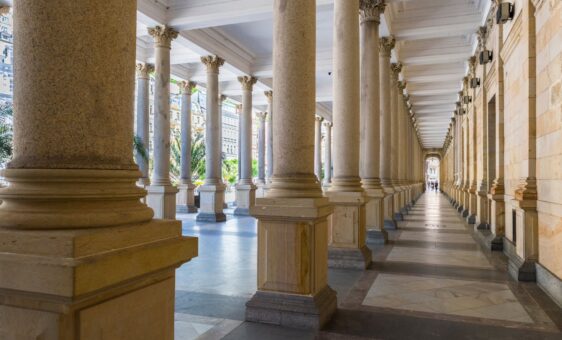Navigating access to the Court File: Abraaj-related ruling confirms Cayman’s commitment to the open justice principle, but gives rise to uncertainty on the scope of documents that may be accessed
Whilst the recent decision of Segal J in the Grand Court[1] in relation to access to the Court file is welcome confirmation of the Cayman Court’s commitment to the general principles of open justice, it gives rise to uncertainty as to the scope of the documents to which the right to access the Court File applies, as it conflicts with previous decisions of the Grand Court. This uncertainty is unwelcome, and gives rise to a need for caution on the part of practitioners. A further decision clarifying the law in this area would be beneficial to the jurisdiction.


Introduction
In a recent Grand Court judgment in the ongoing Abraaj related litigation[2], Segal J granted an application by the JOLs of AIML[3] to inspect the Court file in separate proceedings so as to obtain a copy of a settlement deed that had been exhibited in those proceedings.[4] Whilst the Court grappled with objections on the basis of asserted confidentiality, it does not appear that more fundamental arguments were taken in relation to the scope of the Court file. As explored below, this has resulted in conflicting Grand Court decisions. Given the importance of the interplay between open justice and the interests of the proper preservation of confidentiality rights, together with ensuring consistency in the application of the relevant procedural rules, clarity from a future judgment in this area would be welcome.
The Application
The JOLs’ application to inspect the Court file was made pursuant to GCR O.63 r.3(5) which provides that:
“The Court may give leave on application to any person not being a party to the proceedings to inspect the Court file or to take a copy of any document on the Court file relating to those proceedings”
The JOLs specifically sought to take a copy of a settlement deed between Mr Arif Naqvi and Mr Hamid Jafar (Deed), their application being driven by the potential relevance of the Deed to their adjudication of Mr Jafar’s proof of debt in AIML’s liquidation and to potentially valuable claims (including proprietary claims) by AIML against Mr Naqvi.
Mr Jafar had been compelled by a Court order to produce a copy of the Deed to the other parties to the proceedings. Mr Jafar duly complied with that order and produced a copy of the Deed. Following this, the GHF Parties[5] relied on the Deed in support of an application relating to discovery (Discovery Application) by exhibiting it to an attorney affidavit (Attorney Affidavit). The Attorney Affidavit was not sealed on the Court file and no application for sealing was made. The GHF Parties’ application was considered on the papers and was disposed of in a judgment dated 19 July 2022 (July Judgment).[6] The Deed was summarized and referred to in the July Judgment.
The JOLs relied on the oft cited judgment of Smellie CJ (as he then was) in Re Sphinx[7] reiterating that open justice was a fundamental principle of the common law, as well as being enshrined in the Cayman Constitution, and stating that “the Court should lean in favour of allowing access” to documents which have formed part of the Court’s decision making process at a public hearing and the applicant can show a “legitimate interest in having access to the documents”.
The application was opposed by Mr Jafar. The Deed contains confidentiality provisions preventing Mr Jafar from disclosing it to third parties and placing him under contractual obligation to resist any application for disclosure. Mr Jafar argued that the Deed had not lost its confidential characteristics by virtue of having been referred to in the July Judgment. Mr Jafar further argued that the fact that the Deed was subject to strict confidentiality terms was significant and should be given great weight by the Court. It was argued that the need to protect confidentiality trumped the requirements of the principle of open justice in these circumstances.
The JOLs argued that any objections based on asserted confidentiality were without merit as the Deed had entered the public domain as a result of being exhibited to the Attorney Affidavit and then having been summarized and referred to in the July Judgment.[8]
The Court’s Ruling
Segal J granted the JOLs application, finding that the JOLs had established a legitimate interest in seeing the Deed and that the opposition “based on the need to keep the Deed confidential and preserve its status as a confidential document is without foundation and must fail”.
In reaching that conclusion, the Court found that the Deed had already entered the public domain as it had formed part of the Court’s decision making process on the Discovery Application and had been referred to in the July Judgment. The Court considered the absence of any sealing application in relation to the Attorney Affidavit to be important, stating: “Had it been thought necessary to preserve the confidentiality of the Deed and prevent it from entering the public domain, an application to seal the Court file so as to avoid the Deed being made public could have been made but was not”.
The Conflict With Previous Grand Court Decisions
Whilst the Judgment records that the JOLs’ relied on an English Court of Appeal judgment of Victorian vintage[9] as the basis for their submission that that the exhibited Deed formed part of the filed Attorney Affidavit, there is no reference in the Judgment to GCR O. 41 r.9(2) which provides[10]:
“The exhibits to an affidavit shall not be filed and it shall be the duty of the party on whose behalf an affidavit is filed to preserve the exhibits for use by the Court.”
Crucially, it does not appear that the Court was referred[11] to relevant Grand Court authority in relation to this provision.
First, in the well-known AHAB v SAAD litigation,[12] Smellie CJ (as he then was) noted the significance of GCR O.41 r.9(2) and held that an application to inspect the Court file was not a viable route to seek copies of exhibited documents as the exhibits “have not been filed and so are not available from the court file pursuant to the rules”. The Court considered that the applicant would need to rely instead on the part of its application asserting a right to documents that were said to have come into the public domain (i.e. a right that is entirely distinct to the right under the GCR to inspect and take copies of documents on the Court file).
Second, in the context of an argument about the waiver of privilege[13], Kawaley J held that, as a result of GCR O.41 r.9(2), even where an exhibit had been emailed to the court, this did not mean that the exhibit had been ‘filed’ as a matter of law and that it had not therefore formed part of the Court file.
Noting that GCR O.41 r.9(2) appears to be a Cayman provision which does not appear to have an equivalent in the former RSC in England, we would suggest that these two decisions of the Grand Court – that exhibits do not form part of the Court file – are correct and that the Judge fell into error in finding that exhibits form part of the Court file by relying on old English authority that exhibits form part of an affidavit.
The confusion in this case may have been compounded by the focus on whether the Deed had come into the public domain, and noting that the JOLs could potentially have applied (as in AHAB v SAAD mentioned above) on that alternative basis. Here though, although this public domain issue was raised in the context of its relevance to the merits of the confidentiality arguments, it did not form a standalone ground for a right to access to the Deed – the application was brought solely as an application to access the Court file.
The Relationship Between Sealing Orders and Documents Entering the Public Domain
The Court’s comments in relation to the impact of a sealing order raise another interesting question as to the interplay between the rules in relation to the access to the Court file and documents entering the public domain by virtue of having formed part of the Court’s decision making process. The Judgment suggests that the effect of a sealing order would be to prevent a document that has been referred to as part of the Court’s decision making process from entering the public domain.
Again, this appears to be mixing two distinct issues – one being the accessibility of documents on the Court file and the other being whether documents enter the public domain when forming part of the Court’s decision making process. We would respectfully suggest that it is difficult to see how an order relating to access to the Court file would have such an impact absent some additional order in relation to sitting in private and/or otherwise expressly preserving the confidentiality of the relevant document.
Key Takeaways
We respectfully agree with the former Chief Justice in holding that exhibits do not form part of the Court file and are therefore not caught by any right to inspection. As a result, this recent Judgment therefore creates some uncertainty by suggesting that they do (even if it may have been open to the Court to reach the same outcome on the basis that the exhibited document had come into the public domain if the application had been made on that basis). A further ruling in this area putting the position beyond doubt would therefore certainly be welcome.[14] This is perhaps particularly important given the advent of electronic filing and the fact that the same e-filing portal is used to provide documents to the Court whether or not they technically form part of the Court file.[15]
Until that time it will be all the more important to carefully consider whether sealing orders and other appropriate privacy orders should be applied for in respect of confidential documents exhibited to affidavits. This is particularly the case given that, as here, the absence of a timely application for a sealing order to protect a confidential document produced under compulsion appears to have resulted in pleas to protect that confidentiality being rejected on the basis that the cat was by then already out of the proverbial bag.
[1] In the Matter of an Application Under GCR O.63, r.3(5) (Unreported, Grand Court, Segal J, 12 September 2024)
[2] Ibid.
[3] I.e. the Joint Official Liquidators of Abraaj Investment Management Limited (In Official Liquidation)
[4] As defined in the Judgment, the “Consolidated Proceedings” comprise the proceeding with Cause Numbers FSD No. 150, 153, 203 of 2020
[5] As defined in the Judgment
[6] JOLs of Abraaj Holdings v GHF Group Limited and Others (Unrep., Grand Court, FSD 150, 158, 203 of 2020 (NSJ), 19 July 2022, Segal J)
[7] Re Sphinx (Unrep., Grand Court, FSD 16 of 2009 (ASCJ), 30 January 2017, Smellie CJ)
[8] Referring to the oft cited statement by Lord Woolf MR in the English Court of Appeal in Barings v Coopers & Lybrand [2000] 1 WLR 2353 (EWCA) at [52] that once a document has been “read by the judge, in or out of court, as part of his responsibility for determining what order should be made, [the document] should be regarded as being in the public domain.”
[9] Re Hinchcliffe [1895] 1 Ch 117
[10] GCR O.41 r.9(1) mandates that “Every affidavit used in a cause or matter proceeding in the Court must be filed”
[11] Neither of these previous decisions of the Grand Court are referred to in the Judgment
[12] Ahmad Hamad Algosaibi and Brothers Company v SAAD Investments Company Limited (In Official Liquidation), Maan Al Sanea and others [2017] (2) CILR 788 at [83]-[85]
[13] Credit Suisse London Nominees Limited v. Principal Investing Fund I Limited & Ors (Unrep., Grand Court, FSD 268, 269, 270 OF 2021, Kawaley J, 16 April 2023) and see [2023] (1) CILR Note 7
[14] Particularly given that it is potentially a contempt of court for a person who is not a party to proceedings to publish information obtained from the court file by taking advantage of a court officer acting under a mistake if that person knows they are not entitled to see the relevant document (Per Dobson v Hastings [1992] Ch 394)
[15] See GCR O.63 r.3A which provides that “…documents filed by electronic means insofar as they are required by the Rules to be filed, shall comprise or otherwise form part of the Court file…”



























